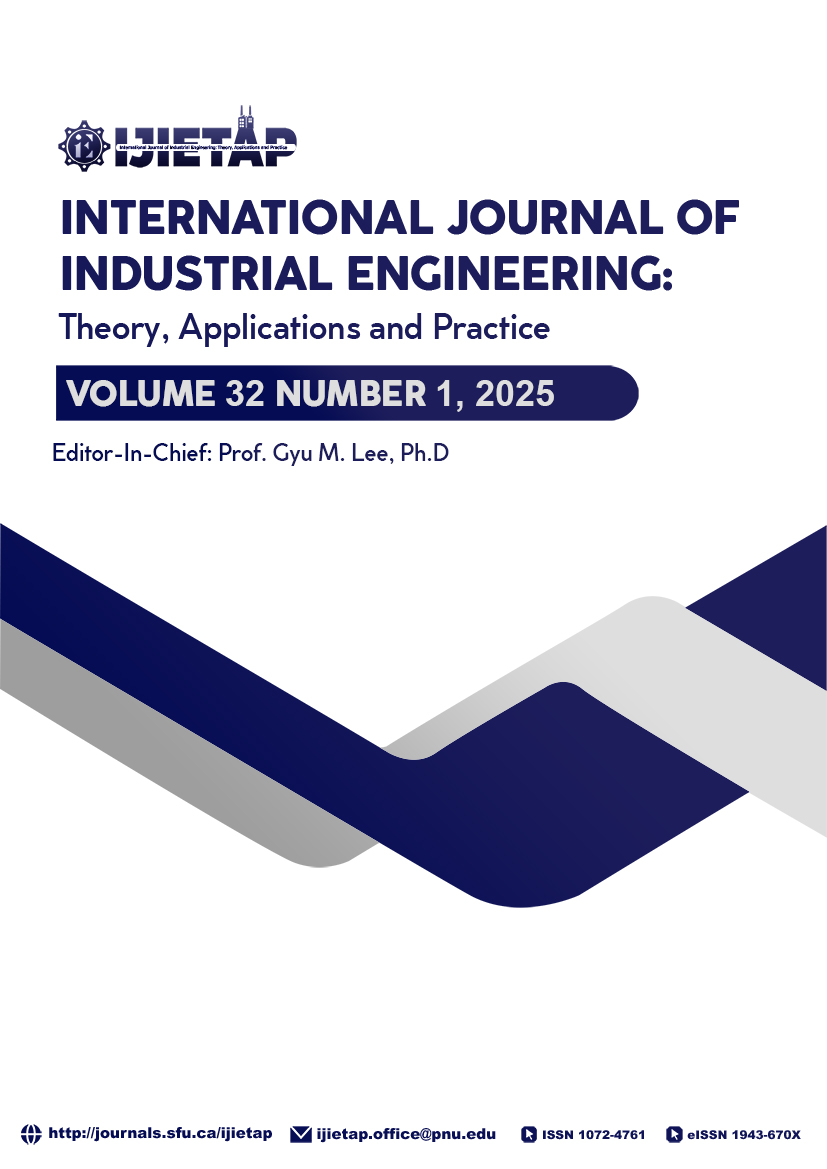Optimization of Inventory Replenishment under Asymmetric Stock-Out and Inventory Holding Costs
DOI:
https://doi.org/10.23055/ijietap.2025.32.1.10035Keywords:
Inventory, perishable inventory, optimization, Metaheuristics, Genetic AlgorithmAbstract
Perishable products are an essential part of commerce. Shelf-life characteristics are usually not modeled in traditional inventory models. This study proposes an inventory replenishment model for perishable products with an asymmetric cost structure for holding and stock-out costs. The modeling phase involves the shelf-life characteristics of products. Shelf life is essential due to sustainability concerns, costs, and service levels due to perished products. In contrast to classical safety stock models, where stock-out costs increase linearly, the proposed model utilizes incrementally increased fixed costs for holding costs in a conflicting cost structure. It incorporates the shelf-life of the products, calculates the probability of perishing, and formulates accurate waste and total costs using an asymmetrical cost structure. The model is applied to a real dataset to assess the performance and compare it with the traditional approach. The performance of the proposed model is better, with a total cost reduction of 45.33%. Additionally, the model demonstrated a 17.21% increase in service level. The sensitivity analysis further underlined the robustness of the proposed model across various demand scenarios and shelf-life conditions. The main research gap addressed by this study is the lack of consideration for shelf-life characteristics and asymmetric cost structures in traditional inventory models. By integrating these factors, this research provides a more accurate and cost-effective approach to inventory management for perishable products, enhancing sustainability and service levels. This study's findings can help businesses optimize inventory strategies, reduce waste, and improve operational efficiency.
Downloads
Published
How to Cite
Issue
Section
License
The Author(s) must formally transfer each article's copyright before publication in the INTERNATIONAL JOURNAL OF INDUSTRIAL ENGINEERING. Such transfer enables the Journal to defend itself against plagiarism and other forms of copyright infringement. Your cooperation is appreciated.
You agree that the copyright of your article to be published in the INTERNATIONAL JOURNAL OF INDUSTRIAL ENGINEERING - THEORY, APPLICATIONS, AND PRACTICE is hereby transferred, throughout the World and for the full term and all extensions and renewals thereof, to INTERNATIONAL JOURNAL OF INDUSTRIAL ENGINEERING - THEORY, APPLICATIONS, AND PRACTICE.
The Author(s) reserve(s): (a) the trademark rights and patent rights, if any, and (b) the right to use all or part of the information contained in this article in future, non-commercial works of the Author's own, or, if the article is a "work-for-hire" and made within the scope of the Author's employment, the employer may use all or part of the information contained in this article for intra-company use, provided the usual acknowledgments are given regarding copyright notice and reference to the original publication.
The Author(s) warrant(s) that the article is Author's original work and has not been published before. If excerpts from copyrighted works are included, the Author will obtain written permission from the copyright owners and credit the article's sources.
The author also warrants that the article contains no libelous or unlawful statements and does not infringe on the rights of others. If the article was prepared jointly with other Author(s), the Author agrees to inform the co-Author(s) of the terms of the copyright transfer and to sign on their behalf; or in the case of a "work-for-hire," the employer or an authorized representative of the employer.
The journal does not provide the author copy of the final paper when it is published. The author(s) can make(s) a subscription to INTERNATIONAL JOURNAL OF INDUSTRIAL ENGINEERING - THEORY, APPLICATIONS, AND PRACTICE if they want to get the final paper that has already been published.
The journal is registered with the Library of Congress (ISSN # 1943-670X). All rights reserved. No part of this publication may be reproduced, stored in a retrieval system, or transmitted in any form or by any means, electronic, mechanical, photocopying, recording, or otherwise, without the prior written permission of the journal.
The author reserves patent and trademark rights and the right to use all or part of the information contained in the article in future non-commercial works.





